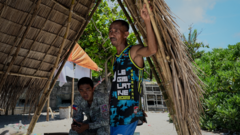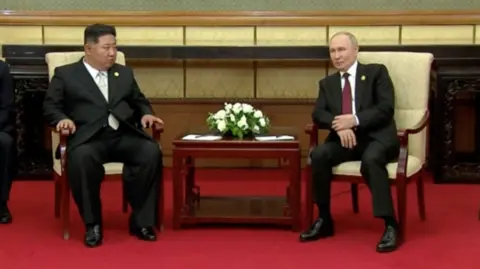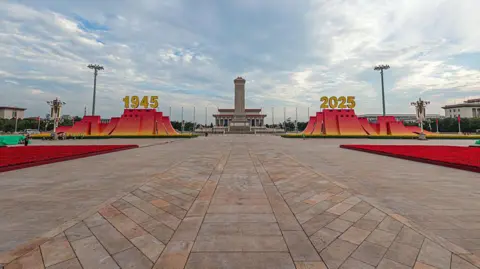Pagasa Island, also known as Thitu, is a mere 37 hectares dominated by small wooden homes and a resilient community that survives on fishing and agriculture. Despite its diminutive size, this Philippines-controlled island stands out as a beacon of defiance against China's expanding presence and maritime claims in the disputed South China Sea.
Over the past decade, China has aggressively established a foothold by commandeering submerged reefs and constructing military installations. Pagasa, which is one of the largest islands claimed by several nations, remains a critical point of defense as the Philippines faces a formidable Chinese naval presence. While other Southeast Asian nations have largely retreated in the face of China's expansion, both Vietnam and the Philippines have taken steps to maintain their claims, with Pagasa at the forefront.
Notably, this island is distinguished by its civilian population. "Pagasa is very important to us," states Jonathan Malaya, assistant director-general of the Philippines National Security Council. With a functioning runway and resident community, Pagasa generates its own territorial sea, bolstering the Philippines' claims in international law.
Reaching Pagasa involves a journey that can take two to three days by boat from Palawan or about an hour by plane, both dependent on often unpredictable weather conditions. Recent improvements, including a newly resurfaced and elongated runway, allow for larger transport aircraft to land, facilitating the delivery of essential supplies from the mainland.
Life on Pagasa is far from luxurious. With continuous support from the government, residents receive monthly provisions of food and basic necessities. While the island has only recently gained electricity and mobile connectivity, fishing remains the primary livelihood for most, though it has become increasingly challenging due to intimidation from Chinese vessels.
Local fisherman Larry Hugo recounts the heightened danger posed by Chinese ships, which have forced him to confine his fishing efforts near the island, drastically impacting his catches. The island's school, overseen by teacher Realyn Limbo, has expanded to meet the needs of over 100 students, offering educational resources amid the serene surroundings.
The tranquility of Pagasa masks profound underlying tensions, as the community navigates the dual challenges of everyday life and geopolitical threat. Plans for improving the island's infrastructure continue, even as traditions and lifestyles persist. Community health worker Melania Alojado indicates that medical evacuations can be problematic due to weather constraints, reinforcing the urgency for medical resources and support.
Jonathan Malaya contrasts the current administration's proactive diplomatic efforts with the previous leadership's strategy of appeasement toward China, emphasizing that a firm stance could cultivate more respect from their larger neighbor.
In Pagasa Island, the commitment of its residents to protect their homes encapsulates a larger struggle against an encroaching superpower, embodying both the spirit of resilience and the fragility of life on the frontlines of geopolitical conflict. As the dispute over the South China Sea continues, Pagasa stands as a testament to the enduring spirit of sovereignty against external pressure.





















